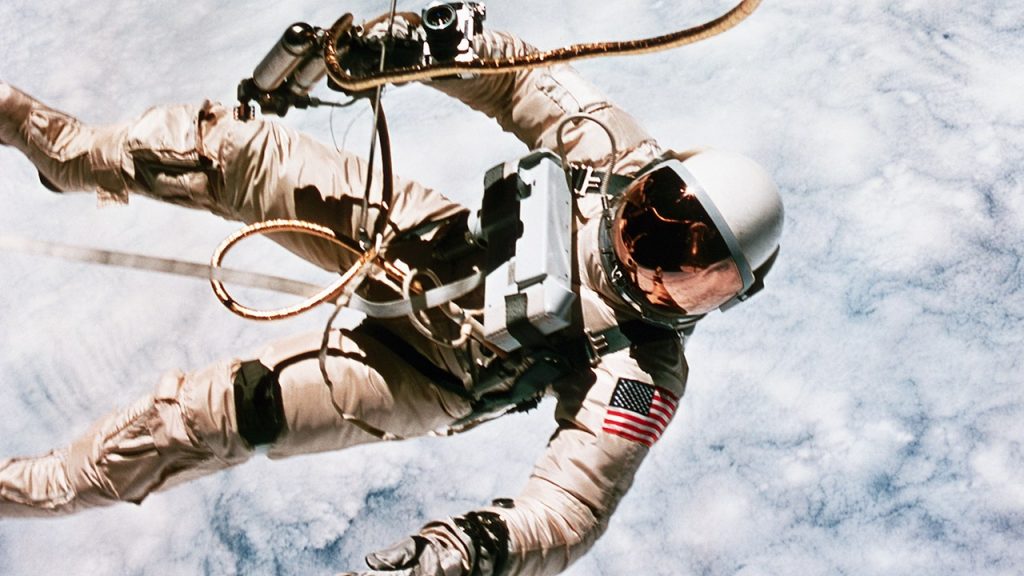On June 3, 1965, astronaut Ed White made history by becoming the first American to walk in space during the Gemini 4 mission. White, an engineer and Lieutenant Colonel in the U.S. Air Force, spent about 20 minutes floating outside the capsule while using a hand-held propulsion gun. Despite running out of fuel for the gun, White managed to maneuver by twisting his body and pulling on the tether. White relished the experience and took pictures of Earth from 103 miles above its surface before reluctantly returning to the capsule.
Gemini 4 was a milestone mission in NASA’s history as it was the first multi-day spaceflight by the United States and the first U.S. spaceflight where astronauts performed experiments. White’s spacewalk was considerably smoother than the first-ever EVA made by Soviet cosmonaut Alexei Leonov, whose spacesuit expanded, making it difficult for him to re-enter the capsule. White almost didn’t make it back to the capsule when the fuel for his propulsion gun ran out, but he managed to maneuver and return safely after being urged by mission control to re-enter.
White’s spacewalk ended on a bittersweet note as he later expressed that re-entering the capsule after the experience was the saddest moment of his life. Tragically, White, along with two other astronauts, Virgil “Gus” Grissom and Roger B. Chaffee, lost their lives in a fire during a rehearsal test for the Apollo 1 mission in 1967. White was laid to rest with full military honors at West Point Cemetery in New York. He confided to a friend that he had sensed the presence of God during his spacewalk, adding a spiritual aspect to his historic achievement.
In recognition of his groundbreaking spacewalk, White was posthumously awarded NASA’s Ambassador of Exploration Award on the 50th anniversary of his EVA in 2015. NASA Deputy Administrator Dava Newman praised White’s achievement, comparing it to Lewis and Clark’s exploration of the West and noting its influence on pushing technological advancements for future space missions, including the journey to Mars. White’s experience in spacewalking paved the way for further exploration and discovery in the realm of space travel, inspiring future generations to reach for the stars.
The significance of White’s spacewalk is further highlighted by the historical context of space exploration, including the first U.S. space station, Skylab, the first American moon landing, and other notable events in NASA’s history. White’s contribution to space exploration, despite his tragic end, remains a testament to human ingenuity and determination in the pursuit of knowledge and discovery beyond Earth’s atmosphere. His legacy continues to inspire and motivate those who follow in his footsteps, shaping the future of space exploration and expanding our understanding of the universe.


